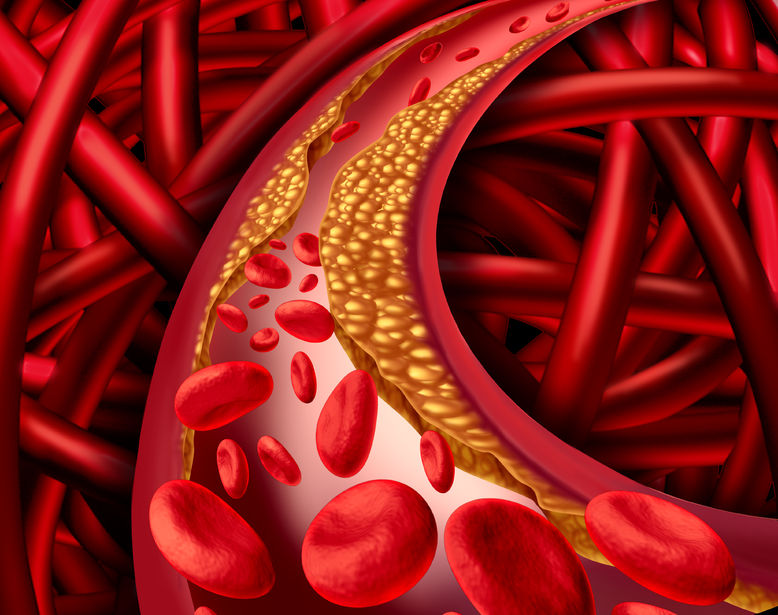Note that your final mark will not be saved in the system.
1.2.b. Preparation and training methods (periodisation and lifestyle diseases) Typeit
Type the correct answers into the spaces. Fill all the spaces before clicking ‘Check Answers!’

Physical inactivity is a lifestyle choice that has a major bearing on the development of lifestyle diseases. Often analogous with a sedentary lifestyle, a common comorbidity is obesity, characterised by a BMI >40 kg/m2. This is a growing trend in modern society, and is greatly influenced by the development of modern technology, encouraging increased sitting times and unhealthy snacking.
The combined effect of these lifestyle choices can increase the risk of developing the following cardiovascular diseases:
(CHD) is the term used to describe the interruption of oxygen delivery to the heart, due to the build-up of deposits in the artery walls. The plaque that forms on the walls of arteries, including the coronary arteries supplying the heart, is known as . The consequence of this build-up is a reduced diameter of the arterial lumen, which affects the efficiency of oxygen transport to key organs and muscles in the body. It can also reduce the elasticity of arterial walls, affecting their ability to and vasoconstrict during sympathetic and parasympathetic activation, respectively. This leads to an increase in as the walls are unable to stretch in response. When the build-up of fatty plaques affects the arteries supplying the brain, it can lead to a stroke.
Like working muscles, the brain requires an oxygen supply in order to function. A occurs when the oxygen supply to the brain is disrupted, starving areas where oxygen is required. Disruption of blood flow to the brain can also be caused by a haemorrhage, which describes the internal bleeding caused by a rupture of the weakened arterial wall, due to a combination of high blood pressure and atherosclerotic plaques. A can occur when the oxygen supply to the heart is reduced or stopped. This occurs when a piece of fatty plaque, which has formed on the wall of an artery, breaks away and causes a blockage within the lumen of a coronary artery, leading to the formation of a (thrombosis). The severity of the situation is determined by how obtrusive this is to oxygen reaching the cardiac tissue.
Physical activity, especially when structured in the form of training, can reduce the likelihood of developing these cardiovascular diseases. Training lowers the low-density lipoproteins (LDL) in the blood, while increasing high-density lipoproteins (HDL). HDL is referred to as ‘good ’, due to its ability to help regulate blood pressure, among other functions. Exercise has also been shown to increase the size of the coronary artery, reducing the risk of arterial blockages. The increase in energy expenditure with exercise encourages weight loss, mainly by a reduction in body fat, eliminating the risk factors that obesity imposes on cardiovascular disease.
The following conditions affecting the respiratory system can also be improved by training:
- can occur when the bronchi become inflamed, due to an inherited characteristic or an environmental pollutant, or even due to exercise. This restricts the volume of air reaching the alveoli in the lungs, thus reducing the efficiency of oxygen transport in the blood. The demand for more oxygen at the working muscle is responded to by an increase in breathing frequency, which could result in of breath as the individual struggles to inhale the required oxygen. The symptoms can be alleviated by using an inhaler, which has an anti-inflammatory effect and, therefore, relaxes the airways.
- (COPD) encompasses a range of conditions which limit the ability to transport oxygen through the respiratory system due to inflammation of the airways. These include bronchitis and emphysema and can impact daily living as they result in breathing difficulties even without the added impact of exercise.
Although conditions affecting the respiratory system can be caused by genetics and the environment as much as by lifestyle choices, training can be an effective therapy to reduce the impact of the aforementioned respiratory conditions. Regular exercise results in respiratory adaptations such as an increased surface area of the and greater function of respiratory muscles, increasing tidal volume and improving the efficiency of gaseous exchange. These can help alleviate the symptoms commonly displayed.